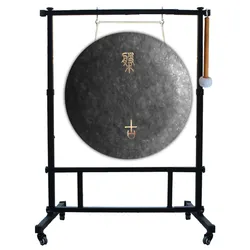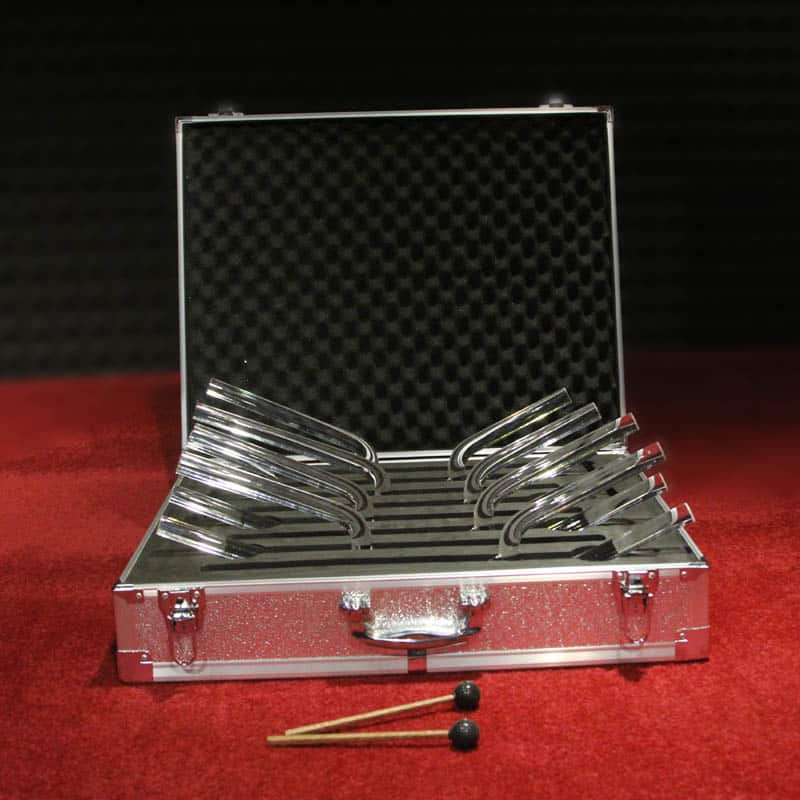Introduction: What is sound healing?
Sound healing is a holistic approach to health that uses sound and vibration to balance the body, mind, and spirit. It can be used to treat a variety of physical, emotional, and spiritual issues. Sound healing can be used alone or in conjunction with other therapies such as meditation and mindfulness.
One of the most basic principles of sound healing is that everything is made up of vibration. Everything in the universe vibrates at a certain frequency. When our bodies are out of balance, we can experience physical or emotional illness. Sound healing uses specific sounds and vibrations to restore balance to the body.
There are many different techniques for using sound for healing. One popular technique is called toning. Toning involves making vowel sounds to activate the chakras, or energy centers, in the body. Another technique called singing bowls is often used in meditation and mindfulness practices.

What are the difference between sound healing and music therapy?
Sound healing and music therapy are both used to improve mental, emotional, and physical health, but they differ in their approach. Sound healing is based on the use of sound vibrations to restore balance within the body, while music therapy uses specific types of music to achieve therapeutic goals.
One of the main differences between sound healing and music therapy is that sound healing does not rely on any specific type of music. Instead, it relies on the use of sound vibrations to restore balance within the body. This can be done with any type of sound, including music. Music therapy, on the other hand, uses specific types of music to achieve therapeutic goals. This includes choosing songs that match a person’s mood or helping to treat specific conditions.
Types of Sound Healing
- Tibetan Singing Bowls: Used for centuries, Tibetan singing bowls produce deep, resonant tones that promote relaxation and meditation. Their soothing vibrations help release tension and restore balance.
- Crystal Bowls and Quartz Singing Bowls: Crystal bowls are made from quartz crystal and produce pure, high-frequency sounds. They are known for their ability to balance and align the chakras, promoting energetic flow and healing.
- Tuning Forks: Tuning forks produce precise frequencies that can be applied directly to the body or around the body’s energy field. They are used to balance energy, relieve pain, and enhance overall well-being.
- Gongs and Drums: Gongs and drums create powerful vibrations that can penetrate deep into the body, inducing a state of deep relaxation and releasing emotional blockages.
- Chimes and Bells: Chimes and bells produce delicate and harmonious sounds that can uplift the spirit, clear negative energy, and create a peaceful atmosphere.
- Vocal Toning and Chanting: The human voice is a potent instrument for sound healing. Vocal toning and chanting involve producing sustained sounds or chanting specific mantras to create resonance and promote healing.
History of sound healing: How did it come about?
One of the most well-known examples of sound being used for healing comes from India’s Vedic culture. Here, priests would use sacred instruments such as drums and horns to create vibrations that were said to heal the body and mind. These vibrations were believed to help restore balance within the individual and promote feelings of peace and wellbeing.
They used chanting and drumming to heal the body, mind, and spirit. The Chinese also used sound for healing, using bells, gongs, and drums. In the early 1900s, Dr. John Upledger began to study the effects of sound on the body. He found that sound could be used to improve circulation, reduce inflammation, and stimulate the immune system. Today, sound therapy is a popular treatment for a variety of health conditions.
How Does Sound Healing Work?
At the core of sound healing is the understanding that everything in the universe, including our bodies, is in a constant state of vibration. Different frequencies and vibrations can affect us on various levels, including physically, mentally, emotionally, and spiritually. Sound healing harnesses the power of specific frequencies and vibrations to bring about positive changes within us.
The science behind sound healing lies in the principle of resonance, where one vibrating object affects another object’s vibration. When sound waves from healing instruments or the human voice enter our bodies, they interact with our cells, organs, and energy centers, resonating with their natural frequencies. This resonance helps restore harmony and promotes healing.
Various techniques and instruments are used in sound healing, each with its unique qualities and benefits. These include Tibetan singing bowls, crystal bowls, tuning forks, gongs, drums, chimes, bells, and vocal toning. Each instrument produces specific frequencies and vibrations that can target different aspects of our being.
Why does sound healing work
There are many reasons why sound healing works. One reason is that sound waves can penetrate deeply into the body, affecting every cell. They can also pass through bones, muscles and other tissue, and enter the bloodstream, brain and nervous system. Sound healing has been found to be helpful in relieving stress and tension, improving sleep, reducing pain and improving overall health. Some people believe that the vibrations from sound can help to clear negative energy from the body and promote a sense of peace and well-being.

What is vibrational sound healing?
Sound is energy, and vibration is the movement of energy. When we create sound, we are putting energy into motion. This is why sound can have such a powerful effect on our emotions and physical well-being. Vibrational sound healing is the use of sound to restore balance and harmony in the body. It can be used to treat physical, emotional, and spiritual issues.
What are the sound healing frequencies?
Sound healing frequencies are vibrations that correspond to different parts of the body and emotions. Each frequency has a unique effect on the mind, body, and spirit. When these frequencies are sounded, they can help to restore balance and harmony within the body.
Some of the most common sound healing frequencies include 432 Hertz, 528 Hertz, and 639 Hertz. These frequencies are said to be especially beneficial for restoring balance within the body and mind. They can be used for meditation, relaxation, and self-healing.
The benefits of sound healing: What can it do for you?
Sound healing has been used for centuries to treat physical and emotional ailments. The vibrations of sound can help to realign the body, mind, and spirit, and can be a powerful tool for healing. Here are some of the benefits of sound healing:
1. Sound can help to relieve pain.
The use of sound has been documented as far back as ancient Greece when singers would use melodies to heal the sick. Today, researchers are exploring the potential benefits of sound for relieving pain.
Studies have shown that sound can help to suppress the nervous system’s response to pain. This means that it can be an effective tool for managing chronic pain, as well as acute pain caused by injuries or surgery.
There are a number of ways that sound can be used to relieve pain. One common approach is to listen to music or sounds that are relaxing and calming. This can help to reduce stress and anxiety, which can aggravate pain sensations.
2. Sound can help to reduce stress and anxiety.
The human brain is constantly processing information, and when there is too much going on, it can lead to stress and anxiety. According to the Anxiety and Depression Association of America, anxiety disorders are the most common mental illness in the U.S., affecting 40 million adults. A recent study published in the journal PLoS One found that sound can help to reduce stress and anxiety.
The study looked at how different types of sounds affected the stress levels of participants. The researchers found that sounds with a slow tempo, such as nature sounds or classical music, had a calming effect on the participants. In contrast, sounds with a fast tempo, such as pop music had the opposite effect and increased stress levels.
These findings suggest that sound can be used as a tool to help reduce stress and anxiety.
3. Sound can help to improve sleep quality.
Sound can help improve sleep quality in a number of ways. For one, sound can serve as a distraction from intrusive thoughts or noises that may keep you awake. White noise or nature sounds can also be calming and help to promote relaxation. In addition, sound can help improve sleep quality by regulating your body’s natural rhythms. Gentle sounds, such as those found in nature, have been shown to increase the production of melatonin, which is essential for healthy sleep. By using sound to improve your sleep quality, you may find that you are able to get more restful sleep and feel more refreshed in the morning.
4. Sound can boost the immune system.
People have long known that the sound of music can affect emotions and moods. Now, research is showing that the sound of music, or any other type of sound, can also boost the immune system. In a study at the University of Utah, it was found that people who listened to music for two hours a day had higher levels of immunoglobulin A (IgA), an antibody that helps fight infection, than those who did not listen to music.
The researchers believe that the increased levels of IgA were due to the positive emotions that are associated with listening to music. These positive emotions help to activate the body’s immune system. The researchers also found that listening to relaxing music had a greater effect on IgA levels than listening to upbeat music.
5. Sound can improve circulation.
Sound can improve circulation. In fact, studies have shown that listening to music for just 30 minutes a day can increase blood flow by as much as 25 percent. This is good news, especially for those who suffer from conditions like hypertension, which can be exacerbated by a lack of circulation.
But it’s not just people with health problems who can benefit from the improved circulation that comes with listening to music. Everyone can enjoy the benefits of better circulation, including improved energy levels, reduced stress levels and a strengthened immune system.
So next time you’re feeling run down, or just need a little boost, put on your favorite song and let the good vibes flow!
6. Sound can stimulate the release of endorphins, which promote a sense of well-being.
The release of endorphins is a natural response to various stimuli, including sound. Endorphins are neurotransmitters that bind to opioid receptors in the brain, which can reduce pain and create a sense of well-being. In fact, some experts believe that the euphoric feeling associated with listening to music is caused, at least in part, by the release of endorphins.
There is evidence that sound can stimulate the release of endorphins. For example, a study published in 2016 found that participants who listened to music experienced an increase in beta-endorphin levels. Another study, published in 2000, found that patients who underwent surgery had lower levels of stress hormones when they listened to music preoperatively.
The benefits of endorphin release are not just limited to reducing stress.
7. Sound can help to detoxify the body.
Sound vibrations have the ability to penetrate deep into the body and help to detoxify it. The vibrations loosen up toxins and help them to be eliminated from the body. This is a process that can be enhanced by using sound therapy. When toxins are released, it can help to improve overall health and well-being.
Can sound therapy help hearing loss
Sound therapy is a form of treatment that uses sound to improve the health of an individual. It can be used to treat a number of issues, such as hearing loss. There are a few different types of sound therapy, but all involve using sound to improve an individual’s health.
One type of sound therapy is known as music therapy. Music therapy involves listening to music that is specifically designed to improve health. This type of therapy can be used to improve mental and physical health, as well as hearing loss.
Another type of sound therapy is known as noise therapy. Noise therapy involves exposing an individual to specific sounds that are intended to improve their health. This type of therapy can be used to treat hearing loss, stress, and anxiety.
Overall, there is evidence that sound therapies can help improve the health of individuals with hearing loss.
How to use sound healing: Tips for incorporating sound into your life
There are many ways that sound healing can be incorporated into your life. One way is to use sound to improve your meditation practice. When you are meditating, you can use a mantra or a singing bowl to help you focus and relax. You can also use sound to help you fall asleep at night. There are many CDs available that feature sounds like ocean waves or rain that can help you relax and fall asleep.
Another way to use sound healing is by using it as a form of therapy. If you are feeling stressed out, anxious, or depressed, sound therapy may be able to help. There are many different types of sound therapy, such as singing bowls, tuning forks, and chimes. These instruments can be used to balance the energy in your body and promote relaxation and peace.
Sound Healing Practices
Sound healing practices can be integrated into various aspects of life to enhance well-being and personal growth. Some common practices include:
- Meditation and Relaxation: Sound healing can deepen meditation experiences and induce a state of relaxation, reducing stress and anxiety.
- Chakra Balancing: Each chakra corresponds to specific frequencies, and sound healing can help balance and harmonize these energy centers for optimal vitality and balance.
- Releasing Emotional Blockages: Sound vibrations can penetrate deep into our emotional bodies, helping to release stagnant energy and emotional blockages that may be causing physical or emotional discomfort.
- Enhancing Creativity and Intuition: Sound healing can stimulate the right hemisphere of the brain, promoting creative thinking and enhancing intuition and inner guidance.
- Promoting Physical and Mental Well-being: Sound healing has been shown to reduce pain, improve sleep quality, lower blood pressure, boost the immune system, and enhance overall mental and physical health.
Sound Healing Sessions and Therapies
Sound healing sessions can take various forms, depending on personal preferences and the expertise of the practitioner. Some common sound healing therapies and experiences include:
- One-on-One Sound Healing Sessions: These personalized sessions involve working directly with a sound healer who tailors the experience to address specific needs and intentions.
- Group Sound Baths and Workshops: Group sessions often take the form of sound baths, where participants lie or sit comfortably while experiencing a symphony of healing sounds. Workshops may involve learning about sound healing techniques and practicing them in a group setting.
- Sound Healing Retreats and Immersive Experiences: Retreats offer an immersive experience in a serene environment, allowing participants to delve deep into their sound healing journey over several days.
- Sound Healing in Hospitals and Wellness Centers: Sound healing is increasingly being integrated into mainstream healthcare settings, such as hospitals and wellness centers, to complement traditional medical treatments and promote healing.
Sound Healing and Modern Science
In recent years, scientific research has begun to explore the effects of sound healing on the human body and mind. Studies have shown that sound healing can have a positive impact on stress reduction, pain management, mood enhancement, and overall well-being. As more research emerges, sound healing is gaining recognition and being integrated into mainstream healthcare practices.
The integration of sound healing in modern healthcare brings the potential for a more holistic approach to wellness, acknowledging the interconnection of mind, body, and spirit. It opens doors for sound healing to be utilized alongside traditional medical treatments, providing patients with a comprehensive and multidimensional healing experience.
Choosing a Sound Healer or Practitioner
When seeking a sound healer or practitioner, it’s essential to find someone experienced, knowledgeable, and trustworthy. Consider the following factors in your selection process:
- Qualifications and Certifications: Look for practitioners who have received proper training and certifications in sound healing modalities.
- Recommendations and Referrals: Seek recommendations from trusted sources, such as friends, family, or healthcare professionals, who have had positive experiences with sound healers.
- Interviewing Potential Sound Healers: Ask questions about their training, experience, and approach to sound healing. It’s essential to feel comfortable and confident in the healer’s abilities before committing to sessions.
- Trusting Your Intuition: Pay attention to your gut feeling when choosing a sound healer. Trust your intuition to guide you towards the right practitioner for your needs.
Incorporating Sound Healing into Daily Life
Sound healing is not limited to formal sessions with practitioners. You can integrate sound healing into your daily life for ongoing self-care and personal growth. Here are some ways to do so:
- Creating a Sacred Space for Sound Healing at Home: Dedicate a specific area in your home where you can practice sound healing. Fill it with instruments, candles, crystals, or any other elements that resonate with you.
- Integrating Sound Healing into Meditation and Yoga Routines: Enhance your meditation or yoga practice by incorporating sound healing instruments or vocal toning. Let the vibrations deepen your experience and promote relaxation.
- Using Sound Healing for Self-Care and Personal Growth: Whenever you feel stressed, anxious, or in need of rejuvenation, reach for your favorite sound healing instrument or listen to sound healing recordings. Allow the sounds to uplift your mood and bring you back to a state of balance.
Precautions and Considerations
While sound healing is generally safe and beneficial, it’s essential to take some precautions and consider the following:
- Sound Healing Contraindications and Potential Risks: Certain conditions, such as epilepsy, pacemakers, or acute mental health issues, may require caution or avoidance of intense sound healing practices. Consult with a healthcare professional if you have any concerns.
- Consulting with Healthcare Professionals: If you have underlying health conditions or are undergoing medical treatments, it’s important to consult with your healthcare provider before incorporating sound healing into your wellness routine.
- Practicing Sound Healing with Mindfulness and Moderation: Like any therapeutic practice, it’s crucial to listen to your body and practice sound healing with mindfulness and moderation. Respect your limits and give yourself time to integrate the healing effects.
How to become a sound healer
Singing bowls, handpan tuning forks, and other sound healing instruments have been used for centuries to restore balance in the body and mind. Sound healers use these instruments to clear energetic blockages and restore flow of energy through the body. Anyone can learn how to become a sound healer with some basic training and practice.
Steps to Becoming a Sound Healer
1. Learn about the healing properties of sound. Sound has been used for healing for centuries. It is thought that sound can help to restore balance and harmony within the body.
2. Study different sounds and their effects on the body. There are many different sounds that can be used for healing, such as singing bowls, chimes, and tuning forks. Each type of sound has its own unique properties and effects on the body.
3. Experiment with different sounds and find what works best for you. Everyone responds differently to different sounds, so it is important to experiment until you find the sounds that work best for you.
4. Use sound therapeutically. Once you have found your preferred sounds, use them therapeutically to help restore balance and harmony within the body.
Who should study sound healing therapy?
Anyone can study sound healing therapy, but it may be most beneficial for people who are interested in wellness and holistic health. The therapy can be used to promote self-healing and improve quality of life. It’s also a good choice for people who want to explore new ways to improve their health.
Sound healing tools

There are many sound healing tools that can be used to promote relaxation, peace, and well-being. Some of the most popular tools include singing bowls, handpans, tuning forks, and chimes. All of these tools emit sounds that can help to harmonize the body and mind.
Singing bowls are perhaps one of the oldest sound healing tools. They are made of metal and have a deep resonance that can be soothing for the mind and body. handpans also have a deep sound that is said to be cleansing and purifying. Tuning forks emit a high-pitched tone that is said to be energizing. And chimes create delicate sounds that are thought to be calming and refreshing.
All of these tools can be used in different ways to achieve different effects.
How to use sound healing bowls

Singing bowls have been used as a form of healing for centuries. The sound from the bowls can help to restore and align your energy, as well as promote relaxation and peace. Here are a few tips on how to use sound healing bowls:
1. Find a quiet space where you can relax.
2. Sit or recline in a comfortable position, and close your eyes.
3. Place the bowl in front of you, and allow the sound to wash over you.
4. Listen to the sound of the bowl and feel its vibration resonate through your body.
5. Allow yourself to be still and let go of any thoughts or distractions.
6. Breathe deeply and relax into the sound of the bowl.
7. Repeat as desired.
Sound healing with handpan

The handpan is a relatively new addition to the sound healing community. It is a steel instrument that is played by striking the side of the instrument with your hands. The sound that is created is said to be relaxing and calming, and can be used to help people achieve a state of deep relaxation.
Conclusion
In conclusion, sound healing is a powerful and underutilized tool that can be used to improve one’s health and well-being. Anyone can learn how to use sound healing techniques, and there are many different ways to do so. If you are interested in learning more about sound healing, I encourage you to explore the resources listed in this article and to experiment with different techniques to find what works best for you.











